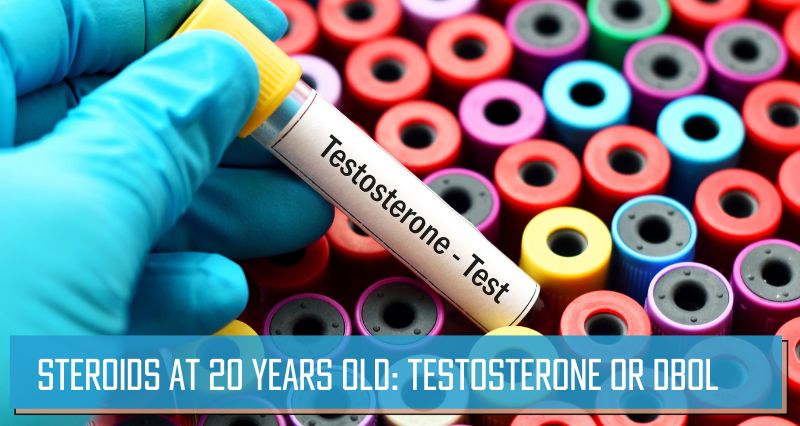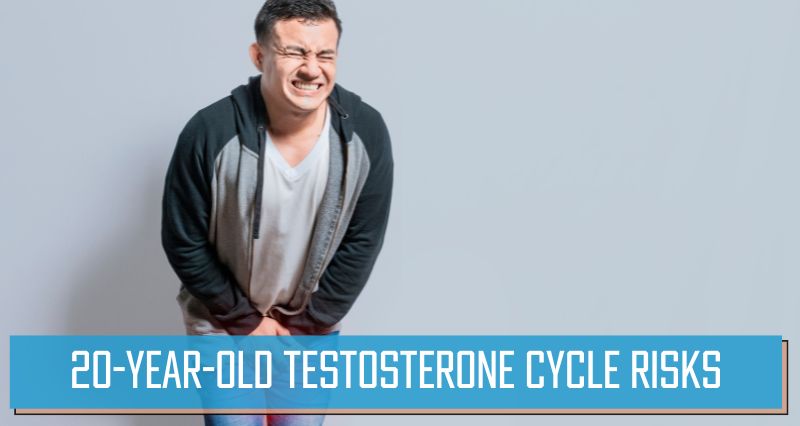20-Year-Old Testosterone Cycle Risks
A testosterone cycle is a plan of treatment for men who have low levels of the hormone testosterone. The goal of the cycle is to increase testosterone levels back to normal, or to a high enough level to improve symptoms.
A testosterone cycle is when a person takes testosterone supplements to increase their levels of the hormone. The benefits of doing this can include increased muscle mass and strength, improved mood and sex drive, and increased energy levels. There are also some risks associated with taking testosterone, such as acne, high blood pressure, and liver damage.
Testosterone replacement therapy (TRT) is the most common type of treatment used in a testosterone cycle. TRT involves taking synthetic testosterone by mouth, through injections, or using skin patches. Synthetic testosterone helps to raise levels of the hormone in the body.
Testosterone cycles usually last for 10-12 weeks. During this time, men may see an improvement in energy levels, sex drive, and strength. Some men may also see an increase in muscle mass and bone density.
The length of a testosterone cycle can vary from person to person. Testosterone cycles are often used by bodybuilders and athletes to help them bulk up, increase strength, and improve their overall performance. Side effects of testosterone cycles can include acne, hair loss, and aggressive behavior.
A testosterone cycle is when a man takes synthetic testosterone to bring his levels up to a normal range. This can be done for different reasons, such as increasing muscle mass, improving sex drive, or treating erectile dysfunction.
Most men who take testosterone will do so for 12 weeks at a time, followed by 4 weeks off. During the cycle, they will take anywhere from 25mg to 1000mg per week. The amount will depend on factors such as their age, weight, and overall health.
After the cycle is finished, most men will see an increase in muscle mass and strength, as well as improved libido and sexual function. There are also some risks associated with taking testosterone, such as liver damage and increased aggression.
How does Testosterone Cycle work?
Testosterone is the primary male sex hormone and an anabolic steroid. The testosterone cycle is the process by which testosterone levels in the body rise and fall in response to changes in activity level, diet, and other factors.
Testosterone levels generally peak during puberty and decline with age. Testosterone levels can also be affected by conditions such as obesity, sleep apnea, and liver disease.
The testosterone cycle is controlled by a complex interplay of hormones. Luteinizing hormone (LH) from the pituitary gland stimulates the testes to produce testosterone. Testosterone then feedbacks to the brain to suppress LH production.
The effects of testosterone on muscle growth are dose-dependent; that is, the more testosterone that’s present, the greater the muscle growth. However, there is a limit to how much muscle growth can occur, and this limit is reached when all of the available sites for muscle growth have been filled.
Testosterone levels fluctuate naturally throughout the day but there are also distinct cycles that occur over the course of several weeks. These cycles are caused by changes in training intensity and volume.
A normal testosterone level for an adult male is between 300 to 1,000 nanograms per deciliter (ng/dL). A “low T” level is below 300 ng/dL. Most men have no symptoms when their testosterone levels are low. But some might experience fatigue, low sex drive, reduced muscle mass and bone density, depression, or hot flashes. If you’re concerned about your testosterone levels, talk to your doctor about what might be causing them to drop and what treatments are available.

20-year-old test cycle risks
There is a 20-year-old test cycle risk that many people are not aware of. This risk is the potential for long-term health problems from taking testosterone replacement therapy (TRT). TRT is a common treatment for low testosterone, and it can be very effective in the short term. However, there are potential risks associated with taking TRT for an extended period of time.
One of the potential risks of TRT is an increased risk of heart disease. Testosterone can increase the levels of LDL cholesterol in the blood, which can lead to atherosclerosis (hardening of the arteries). This can increase the risk of heart attacks and strokes. TRT may also increase the risk of blood clots, which can lead to serious health complications.
Another potential risk of TRT is an increased risk of prostate cancer.
Steroids can cause a number of health problems, including liver damage, high blood pressure, and heart disease. In some cases, they can even lead to death.
One of the main risks is that it can lead to masculinization, which means that women who take it may develop male characteristics, such as a deepening of the voice and facial hair growth. Additionally, men who take testosterone may experience side effects such as acne, aggression, and mood swings. Finally, both men and women who take testosterone may be at risk for liver damage.
While some argue that the current system is too rigid and does not allow for innovation, others believe that it is necessary to maintain standards.
Testosterone cycle side effects for 20-year-old
Testosterone is an anabolic steroid with a wide range of side effects, some of which can be serious.
Testosterone’s most common side effects include acne, accelerated hair loss, aggression, anxiety, and increased appetite. Less common side effects include changes in libido, depression, difficulty urinating, fluid retention, and high blood pressure.
Some of the more serious side effects of testosterone include liver damage, kidney damage, heart problems, and stroke. Testosterone can also exacerbate sleep apnea and increase the risk of blood clots.
For 20-year-olds, the most common side effect of taking testosterone is acne. This is because testosterone can increase the production of sebum, which is the oily substance that your skin produces. Too much sebum can lead to clogged pores and breakouts.
Other potential side effects of taking testosterone include hair loss, liver damage, high blood pressure, and increased aggression. While these side effects are rarer, they can still happen. So if you’re thinking about starting a testosterone cycle, talk to your doctor first and weigh the risks and benefits carefully.
If you are considering starting a testosterone cycle, it is essential to be aware of the potential risks and side effects. Talk to your doctor about whether testosterone is right for you.
Steroids at 20 years old: What to take?
Steroids are a hot topic of conversation among 20-year-olds. There are many misconceptions about steroids and their effects on the human body. Here are the facts: Steroids are synthetic drugs that mimic the hormone testosterone. They can be taken orally, injected, or applied topically. Steroids can be used to improve athletic performance, increase muscle mass, and change appearance. Short-term side effects of steroids include acne, increased appetite, and increased risk of injury. Long-term side effects of steroids include liver damage, high blood pressure, and heart disease. Steroids are a hot topic, especially when it comes to young athletes.
The use of steroids by 20-year-olds is on the rise. According to a recent study, 1 in 5 high school seniors has used steroids at least once. There are many reasons why young adults may turn to steroids. Some want to improve their athletic performance, while others want to build muscle or improve their appearance.
There are some risks associated with taking steroids, especially at a young age. Steroids can lead to aggressive behavior, mood swings, and acne. They can also stunt growth in teens and cause heart problems. Despite the risks, many 20-year-olds continue to take steroids.
If you’re considering taking steroids, talk to your doctor first.

Steroids at 20 years old: Testosterone or Dbol
Steroids have been around for over half a century, and their use has been well documented. In the early days, they were used mainly by bodybuilders and athletes to enhance performance. Today, steroids are used by people of all ages for various purposes.
One of the most common steroids is testosterone. Testosterone is a hormone that is produced naturally in the body. It is responsible for developing male characteristics such as facial hair and a deep voice. It also plays a role in muscle development and bone strength.
Testosterone levels peak in the late teens or early twenties and then gradually decline with age. This decline can be accelerated by certain lifestyle factors such as lack of exercise, poor diet, and excessive alcohol consumption.
Dianabol is taken orally and helps to increase muscle mass and strength. Testosterone is injected and helps to increase muscularity and endurance.
Both drugs come with a host of side effects, including acne, hair loss, liver damage, and heart disease. Steroids are also illegal without a prescription.
Despite the risks, many young athletes are willing to take them in order to improve their performance. Some see it as a necessary evil in order to stay competitive. Others believe that the benefits outweigh the risks.
Steroids are essentially synthetic versions of the hormone testosterone. They can be taken orally, injected, or applied topically. People use steroids to increase muscle mass, improve athletic performance, and reduce body fat.
Some risks are associated with steroids, especially at a young age. Steroids can cause liver damage, high blood pressure, and aggressive behavior. They can also lead to male pattern baldness and testicular shrinkage.
So, should you take steroids if you’re 20 years old? The answer is yes if you want to bulk up quickly or enhance your athletic performance.
Summary and Conclusion
In conclusion, it is evident that there are many risks associated with taking testosterone, especially when it is done so without medical supervision. These risks include heart attacks, strokes, and blood clots. Given the potentially serious consequences of taking testosterone, anyone considering doing so should first speak with a doctor to weigh the risks and benefits.



Leave a Reply